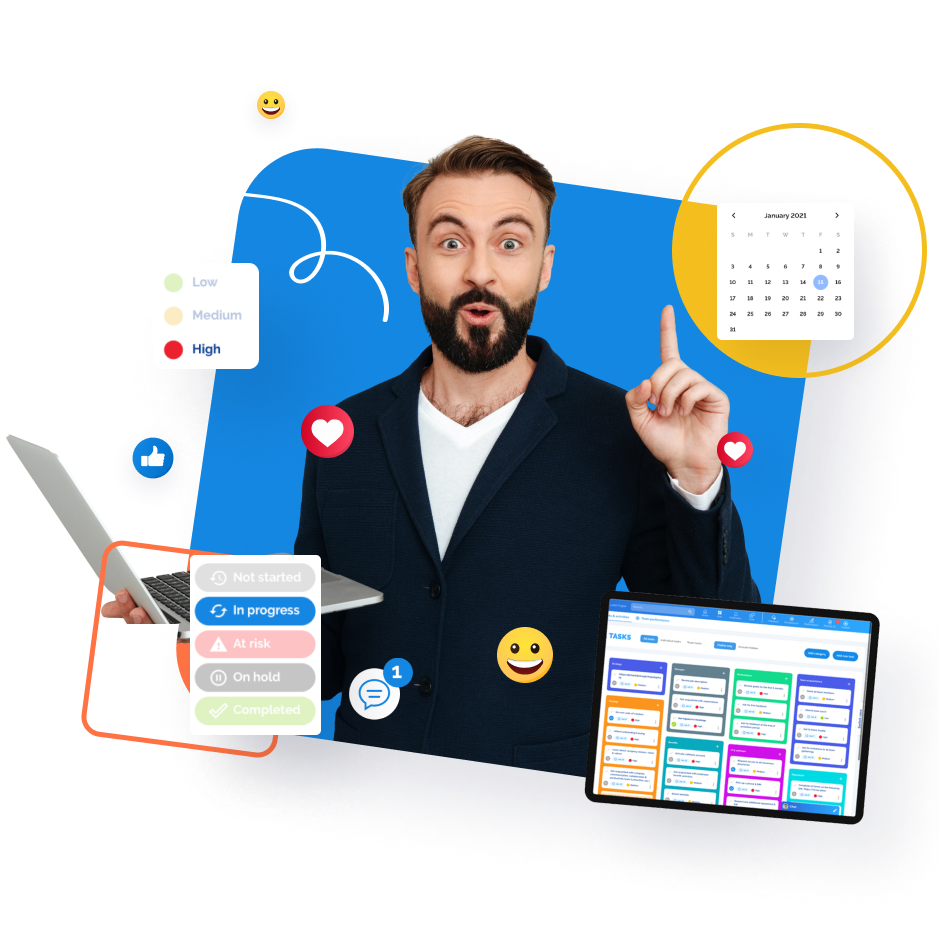How industry leaders use LutherOne for building a sustainable
FEEDBACK CULTURE


The true value of feedback can only be understood when it is featured at the heart of everyday company operations. By creating a working culture that values feedback as an essential part of personal and company growth, encouraging feedback continually and consistently, you’ll create a more engaged, committed, and productive workforce.
But designing a feedback culture isn’t something that just happens; it’s intentional.
Learn how industry leaders leverage LutherOne to develop sustainable feedback cultures focusing on all its crucial elements, including:
Culture that normalizes feedback
Capability to share & receive feedback
Construct enabling frequent & contextual feedback
Consistency & persistence
Explain the why and nurture a growth mindset
When employees feel their company’s actions aligns with their personal goals & aspirations, there are more likely to be engaged and motivated. Implementing a purpose-driven employee feedback process can help your employees thrive.
Lead your workforce towards believing their abilities can be developed through dedication & hard work:
Use Company feed to explain what the culture of feedback entails, and how both employees and business can benefit from it.
Set the example and hone your ability to give and receive feedback. Pledge your support of the feedback culture, share success stories & proactively ask for feedback.


Educate on the how
Delivering and receiving feedback isn’t always easy. It is why most people don’t practice it in the first place. Just like any ability, feedback must be practiced & developed to be mastered. Take time to educate your people and bring awareness to the importance of the culture of open communication.
Use Workspace as a knowledge hub with all the feedback training materials, stories, and more.
- Hold live Q&A sessions in a Workspace
Feedback+ by LutherOne features smart guided scenarios that walk users through a variety of feedback types, helping them formulate even the most complex reflections in a concise & structured manner. Learn more >
Develop feedback-safe environment
An environment where employees feel comfortable expressing their thoughts and emotions with peers, managers, and others, is at the very core of healthy company culture. At an organizational level, the key to building an emotionally safe space for feedback lies in demonstrating and driving empathy, transparency, and trust.
- Benefit from safety & anonymity features of Feedback+ >


Normalize feedback as part of every day, make it seamless
To make feedback something that happens routinely, and becomes expected, it must be integrated into everyday operations, regardless of where and how people work. Use the power of Feedback+ with smart guided scenarios designed to cover any situation that might occur:
- Individual feedback
- Team feedback
- Meeting feedback
- Skill & competence mapping
- Custom feedback
Nurture a culture of positive reinforcement
Strike the right balance of positive and corrective feedback, build on strengths and stimulate desired behaviors with the power of positive reinforcement.
Appreciate others by telling them what strengths make them unique with the most positive & colorful form of feedback - gamified Bubbles
Celebrate wins, recognize accomplishments and reinforce positive behaviors to boost performance & engagement of your remote workforce with portable digital awards & certificates.


Lead by example
When employees see leaders model strong feedback principles, they're more likely to fall in line and do the same. Leaders must hone their ability to give and receive feedback and set the example. They must consistently ask for feedback (up and down the hierarchy and sideways) and visibly show that they receive feedback well.
Turn ordinary interactions to extraordinary insights
Culture cannot be purchased nor developed in a silo. It has to be consistently delivered and repeatedly analyzed, and communicated to everyone across teams. Embrace continuous feedback to drive better collaboration & performance and gather irreplaceable insight into meeting efficiency, intensity, and tonality of communication.
